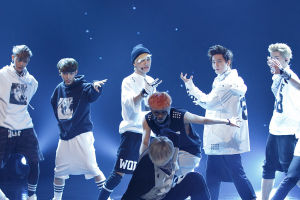
Korean pop culture, popularly known as K-Pop, has taken the global stage by storm, evolving into a cultural phenomenon that not only entertains but also drives significant social change.
Its ability to challenge and reshape gender stereotypes is particularly noteworthy, reflecting a transformative wave among young audiences. The research primary focuses on how the music and personal expressions of K-Pop idols are radically shifting perceptions of gender norms, especially among Indian teens and young adults.
K-Pop's Historical Roots
Originating in South Korea, the roots of K-Pop trace back to the 1950s with the Kim Sisters, who paved the way for Korean artists. However, the movement matured in the 1990s under groups like Seo Tajji and Boys, who amalgamated various music styles with innovative choreography.
The introduction of H.O.T marked the rise of the modern K-Pop idol group, setting a new standard for performance and presentation in the genre. Fast forward to today, K-Pop’s influence spans continents thanks to globalization, with groups like BTS, Blackpink, and Twice capturing the hearts of millions, including many in India.
Breaking Gender Norms
The advent of K-Pop has witnessed profound shifts in how gender is represented and perceived. For instance, boy band BTS has become iconic for defying traditional masculinity. Members have showcased gender-neutral fashion, sporting makeup and outfits that blur traditional lines.
Their leader, RM, exemplified this ethos in a poignant UN speech advocating for individual expression, regardless of gender identity. Other members, like Jimin and V, have also embraced a more fluid interpretation of masculinity, garnering discussions around appropriating feminine aesthetics.
Similarly, girl group 2NE1 revolutionized what it means to be female in K-Pop. Rejecting the typical cute image, their bold songs and presence emphasized empowerment and toughness. The group’s former member CL openly challenges expectations and illustrates her resolve to redefine femininity through her music and style.
K-Pop's Reach in India
The Korean wave found its way to India as early as 2012, ignited by Psy’s global hit, "Gangnam Style." As Indian audiences gravitated toward K-Dramas and music in growing numbers, the genre began to influence local perceptions of gender roles. Most followers discovered K-Pop through friends or social media, with some citing the pandemic as a pivotal factor in their exploration of this vibrant culture.
In a recent survey conducted among 20 respondents aged 12-24, a significant 65% acknowledged that K-Pop has significantly shaped their understanding of established gender norms. This figure underscores a key influence K-Pop has in a traditionally conservative society.
Conclusion
In summary, K-Pop serves not just as an entertainment medium but also as a catalyst for societal change, particularly surrounding gender perceptions among Indian youth. The genre has become a platform for artists to voice their disagreements with gender stereotypes and promote individuality, challenging cultural constraints.
Although the path to complete gender equality within K-Pop is still underway, the movement undeniably contributes to altering the landscape of gender expectations and promoting a more inclusive society.


